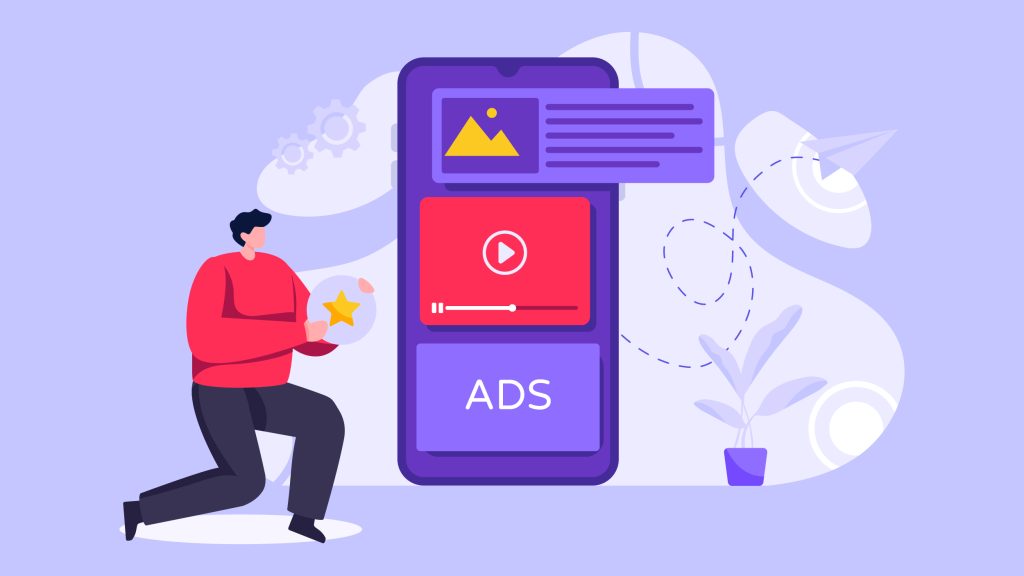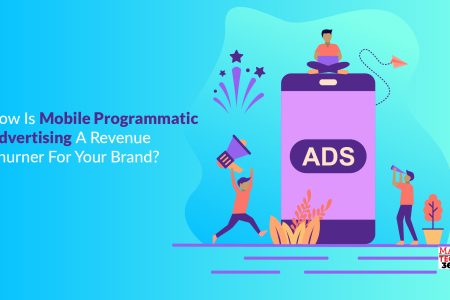In 2021, mobile video ads accounted for almost 87% of all mobile advertising. According to Siteefy, research has shown that the mobile channel may provide 200% more brand engagements than all other channels combined, reaffirming that this number is not without merit.
We can only talk about mobile programmatic advertising after introducing programmatic advertising in general.
Through the use of programmatic technology, both advertisers and publishers have observed a rise in their margins. This has made it possible for small advertisers who previously couldn’t afford to buy ads to access a sizable new market. Moreover, purchasing audience segments across a variety of publications is made simple by programmatic advertising technology.
The nature of mobile programmatic advertising is evolving as more people watch videos on their mobile devices. Particularly noteworthy is the development of programmatic advertising, which we describe as an automated, technology-driven technique of procuring, offering, or executing digital display ad spots.
What Is Mobile Programmatic Advertising?
The automated method of purchasing, selling, and displaying mobile ads is referred to as mobile programmatic advertising. The programmatic technique is used in this instance for mobile display ads. Mobile banner ads, mobile video ads, mobile native ads, etc. are all examples of mobile advertising. A mobile ad is any type of advertisement designed for mobile display.
The DSP and SSP must work together for mobile programmatic to be successful. Although the second offers room for the advertisement to be placed, the first looks for a place to place it. Nevertheless, software and other programmatic ad platforms like an advertising exchange, ad networks, etc. work together to automate the entire process rather than having both parties meet in person to negotiate.
The Benefits Of Mobile Programmatic Advertising
Digital advertising can be targeted more effectively and optimized with the help of mobile programmatic. Advertisers can establish a purchase price, select the target market, and specify the part of the internet where they want their advertising to display. These features all offer lots of room for customization.
Data and the ability to use it to lower cost per thousand impressions (CPM) and enhance click-through rate are the main benefits of mobile programmatic advertising (CTR).

Mobile programmatic advertising purchasers frequently have access to a variety of advertising sites that are divided into different sorts and provide details on the mobile device, installed applications, operating system version, and size of the offered ad formats. The model of the mobile device, the size of the screen, the speed of the internet connection, and other criteria can then be used to categorize ads.
The share of mobile devices in all sponsored search impressions is over 70%. When you consider how frequently people use mobile devices, it shouldn’t really come as a surprise.
In the end, mobile programmatic advertising allows advertisers to fully express their creative potential. You can be certain that your advertisement will reach your target audience thanks to this technology’s precision targeting. This enables concentrating all efforts on creation rather than trying to identify a particular market for the product.
For instance, a video format is an excellent tool for “grabb[ing]” an audience. While being pricey, mobile programmatic data enables such expensive advertising to reach a large but at the same time, specific audience, aiding in the improvement of the performance metrics of your advertising campaign.
What Are Your Mobile Programmatic Advertising Options?
We have just discussed the programmatic industry actors up to this point, leaving out the various nuanced market talks. Once more, programmatic technology is here to support and enhance more traditional human interaction processes. This is accomplished by utilizing three distinct ecosystems: the open market, the private market, and the private transactions.
Open Marketplace (OMP)
The Open Marketplace is an ecosystem for real-time bidding or RTB, that is essentially accessible to everyone.
RTB is not the same as programmatic ad buying, despite what some people would think. Even the most well-known ecosystem for DSPs and SSPs contains RTB networks, such as the Open Marketplace.
Consider the free market as an open auction where everyone can participate and submit a bid. The ad is published by whoever is prepared to pay the most money for each impression.
Private Marketplace (PMP)
Since private marketplaces are in some ways “exclusive,” they typically provide higher quality products than open ones. Private marketplaces are online auctions accessible only by invitation where high bidders can purchase specific bundles.
The relationship between publishers and advertisers is “closer” in private marketplaces compared to open auctions. Publishers may now more easily keep track of and guarantee that advertisers are aware of the locations where their advertisements are placed.
Private Deals (PD)
In programmatic private transactions, the advertising company often accepts a direct offer from the publisher to purchase the inventory for a defined period of time at an agreed-upon price. The “one-on-one” conversation may last for a while.
With this kind of arrangement, advertisers can be certain that their ads will appear on publisher websites and in strategic locations.
How Does Mobile Programmatic Advertising Integrate Into Mobile Apps?
Around 94% of Facebook’s advertising sales as of the third quarter of 2019 come from mobile devices. As a result, revenue generation through mobile devices is not just restricted to website browsing.
Mobile applications are made to offer to advertise, and they have places set aside for doing so. There are two ways that locations can be displayed: they can be visible on the screen or they can be intended to appear while you use the application, such as between two game levels (for example, as a little banner at the bottom of the page). Based on the types of ads a certain app supports
The mobile advertising SDK is a crucial element that enables programmatic advertising. Software Development Kit, or SDK for short, is a collection of tools and software that enables developers to construct common functions without having to start from scratch. These SDKs give developers the ability to control the requirements for ad inventory from various ad networks to start the in-app mobile programmatic advertising process.
The publisher initiates the ad at a specific stage of the user’s journey when they utilize the program. The publisher’s server or a middle platform receives this ad request, which it then transmits through SDK to the Sell-Side Platform (SSP) and Ad exchange.
The Demand Side Platforms (DSPs) are then put into an auction by the SSP or exchange to compete for the available ad spots. DMPs, which assist marketers in placing bids on particular user segments or types, are coupled with DSPs. DSPs generally act as an advocate for advertisers in this system and assist businesses and agencies in placing bids on auctions.
The winning bid from an auction won by a DSP at the SSP or exchange level is sent to the middle platform. If there are offers from other SSPs at this point, another auction may be held.
The advertisers who placed the highest offer among all SSPs win the auction and are granted the privilege to display advertising.
Conclusively
The void left by conventional models between users and marketers is filled by mobile programmatic advertising buying. It enables marketers to serve advertisements to thousands of publishers simultaneously while managing campaigns across numerous devices and channels from a single dashboard. Modern advertising tactics heavily rely on mobile programmatic advertising in a world where mobile devices are the most important tools.
